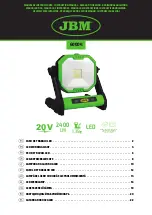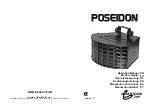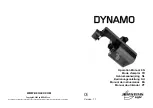
5
What are Ultraviolet emissions?
Ultraviolet (UV) emissions are a form of electromagnetic radiation that comes from the sun
and man-made sources like tanning beds and welding torches.
Ultraviolet light has shorter
wavelengths than visible (white) light; this means that UV waves are invisible to the human
eye.
Radiation is the emission (sending out) of energy from any source. There are many types
of radiation, ranging from very high-energy (high-frequency) radiation – like x-rays and
gamma rays – to very low-energy (low-frequency) radiation – like radio waves. UV rays are
in the middle of this spectrum. They have more energy than visible light, but not as much as
x-rays.
There are also different types of UV rays, based on how much energy they have. Higher-
energy UV rays are a form of
ionizing radiation
. This means they have enough energy to
remove an electron from (ionize) an atom or molecule. Ionizing radiation can damage the
DNA, which in turn can destroy a virus on a surface but could also lead to cancer on a
person. However even the highest-energy UV rays don’t have enough energy to penetrate
deeply into the body, so their main effect is on the skin.
UV emissions are divided into 3 main groups:
UV-A
rays have the least energy among UV rays. These rays can cause skin cells to age
and can cause some indirect damage to cells’ DNA. UV-A rays are mainly linked to long
-
term skin damage such as wrinkles, but they are also thought to play a role in some skin
cancers.
UV-B
rays have slightly more energy than UV-A rays. They can damage the DNA in skin
cells directly and are the main rays that cause sunburns. They are also thought to cause
most skin cancers.
UV-C
rays have more energy than the other types of UV rays. In nature, they react with
ozone high in our atmosphere and generally don’t reach the ground, so they are not normally
a risk factor. However, UV-C rays from man-made sources, such as arc welders, mercury
lamps, and UV disinfection bulbs used to kill bacteria and viruses in water, air, or surfaces
do present a risk factor
. The necessary PPE and operational precautions must be taken,
just as when using arc welding equipment.
Health issues related to Ultraviolet emissions:
In addition to skin cancer, exposure to UV rays from the sun or artificial sources like tanning
beds can cause sunburn, premature aging of the skin and signs of sun damage such as
wrinkles, leathery skin, liver spots, actinic keratosis, and solar elastosis. UV rays can also
cause eye problems and weaken the immune system
.
△
!
△
!
WARNING





























